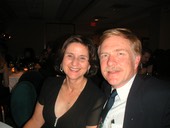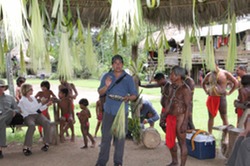
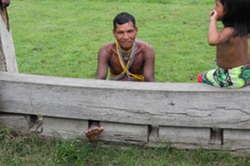
We gathered under a shelter where the Chief, with translation help from Octavio, told us a bit about life in the village. You can see from these pictures and others that follow, that the children were not shy about approaching us and sitting next to us. The Chief is democratically elected for 5 years. They have a meeting place with benches and some electricity where they gather for community meetings. The 2 candidates for Chief stand on either side of the area (it is not enclosed so calling it a room seems wrong) and the people line up in front of the person they want to be chief. The longest line wins. To be consider for Chief you can't belong to one of the Panamanian political parties and you have to have a clean record. The Chief is the first resort for justice in the community. He can make judgments and define punishment for most offenses. For major offenses, police and other justice officials would be called in. For some offense the punishment is being put in something similar to stocks that were in use in Colonial America. (You can see the painting on the man in the stocks and the decoration he was wearing around his neck). For a minor offense, the offender would be in the stocks for a day. For major offenses the duration would be longer, but the person would always be released at night.
We were treated to some traditional music. On one of the pieces, Caroline was invited to play the drums. They were playing another larger drum and a flute of some sort.
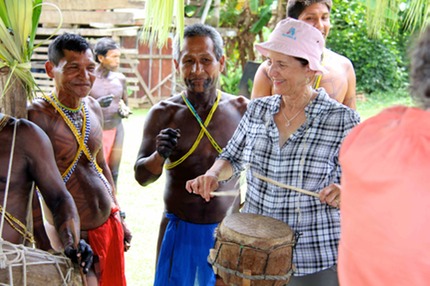
During the music, the Embera women grabbed a visitor and danced with them. Jon tickled his dance partner when he twirled her in a jitterbug move.
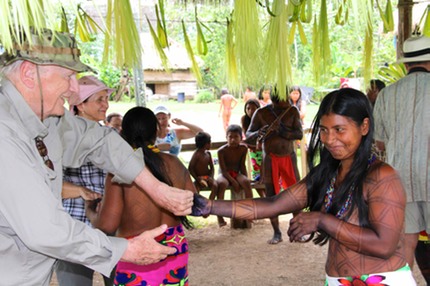
Caroline and Jeanne were among the dancers as well.
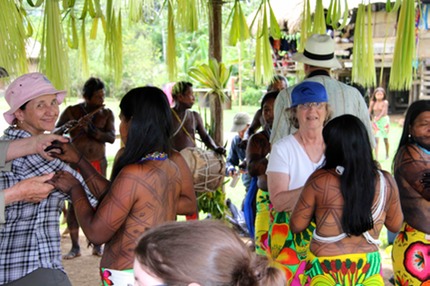
They showed us a dance that is performed to heal a sick person. The sick person would lie in the center and the dancers would dance around him in a circle. There would be a healer as well, but we did not see that. Only the women dance.

To be continued in the next post.
